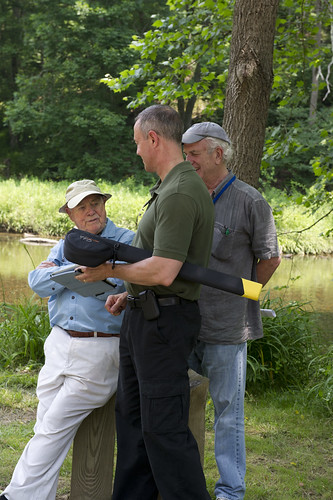Fishing is a very relaxing pastime, experiencing the wildlife and the gently lapping water, allowing you to be one with nature. A disappointed fisherman, with no fish to show for the effort, is quite another story. This article contains lots of advice to help you catch more fish.
Patience is required when it comes to fishing. Fishing will require your undivided time and dedication when you are out on the water. Do not let it bother you. Just stay calm and optimistic.
When fly fishing in a stream, cast upstream of your desired fishing hole and allow the current bring the lure down automatically. This is more natural looking and increases your odds of catching something. Try to always keep your line taught, and reduce the slack in your line so you can feel the fish bite.
Swimming Downstream
Learn more about migration patterns to find out if you should be fishing uphill or downhill according to the season. During spring, you will need to cast your rod upstream so that your bait is waiting in front of the fish swimming downstream. Conversely, in the fall, when fish are swimming downstream, you should cast downhill.
Remember to bring along a water-resistant camera if you plan to release the fish you catch. You will have a record of your catch without having to keep the actual fish. That keeps the fish alive and your reputation intact.
When attaching a lure or hook to the line, try using an improved clinch knot. Put your line into the hook’s end and make 5 turns around your line and then pass the end into the eye and through the first coil. Complete the not by pulling the lead end through the initial loop and then tightening as much as possible.
Lots of bass fishermen use light-colored grubs. The most effective colors include white, speckled, light green, yellow or light gray. Grubs that are translucent usually have metal-colored flecks mixed in, which reflects light and can help increase your catch. When you can’t catch anything, switch over to a grub which matches the color of the water.
Sharp Knife
An often-overlooked tackle box necessity is a sharp knife. A sharp knife is one of the single most important tools to carry, and you’ll be in trouble if you don’t have one. It should be sharp, have a rust-proof blade and of high quality.
Always make sure that you have purchased a fishing licence when necessary. In the USA, there is a different license in each state. You may also choose a day-long or even year-long license.
Decide on which color of bait to use, based on the surroundings and light conditions at the location where you will be fishing. Make sure that the bait you choose can be clearly seen by the fish. Brightly-colored bait is ideal for murky water. Darker, richer bait colors work better in clear water where they will stand out from their surroundings.
Be sure to check the weather prior to going on a fishing trip. Sometimes, the weather may not be suitable for fishing. The best time to go fishing is when there is an overcast sky. Although it’s possible to catch fish otherwise, you’re more likely to be successful with overcast skies.
If you are lucky enough to hook a large fish, and the fish turns away from you as you are attempting to reel it in, the best idea is to let the fish go. If this happens, it means your line isn’t long enough to use the pump and reel method. Next time, remember to give the fish a little more time before you start to reel it in.
Seeing the faces of your family as you present them with a fresh fish to enjoy, is worth every second you’ve spent reading this article. Everything you have learned here will help your confidence, and it will also make you become a better fisherman, so remember to use this knowledge in catching some fish!
